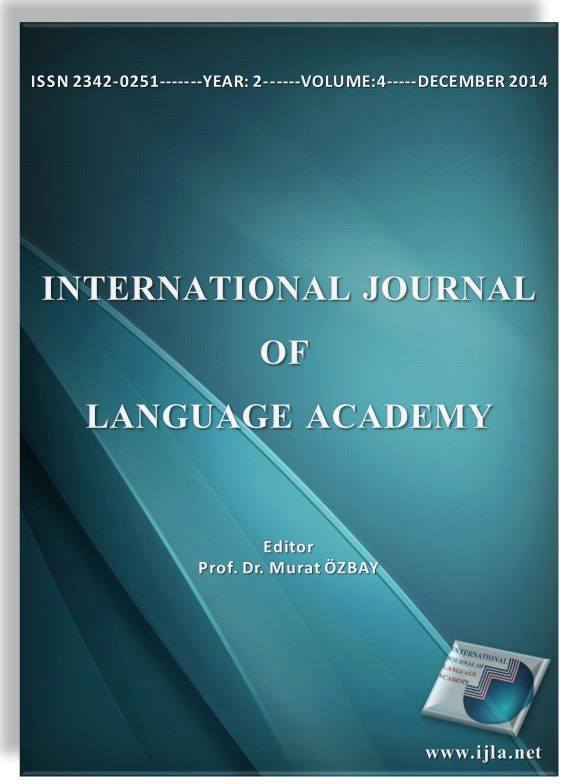Author :
Abstract
Fransız edebiyatı yazarlarından Alphonse Daudet’in 1869 yılında yazdığı “Değirmenimden Mektuplar” adlı eseri değişik çevirmenler tarafından Türkçe ’ye çevrilmiştir. Bu çalışmada, bu eserin üç ayrı çevirisi seçilmiş ve kaynak metin ile çeviri metinler arasındaki benzerlikleri ve farklılıkları ortaya koymak amacıyla çeviri eleştirisi niteliğinde bir inceleme yapılmıştır. Amaç, kaynak dilden hedef dile aktarım yaparken çevirmenlerin ortaya koydukları çeviri stratejilerini betimlemek ve sonuçlarını ortaya koymaktır. Bu çalışmadaki çeviriler Gideon Toury’nin hedef odaklı çeviri kuramı çerçevesinde değerlendirilecektir. Bu yaklaşıma göre, kaynak metne en yakın çeviri yeterli, en uzak çeviri ise kabul edilebilir olarak değerlendirilecektir. Öncelikle süreç öncesi normlar olarak çeviri eserlerin kapak sayfaları, önsözleri, bölüm sayıları ve sayfa sayıları incelenmiştir. Ardından kaynak metinden cümleler seçilip, üç farklı çevirideki karşılıkları Gideon Toury’nin erek odaklı çeviri kuramı ve çeviri stratejileri çerçevesinde değerlendirilmiştir. Bu incelemenin sonuçlarına göre, üç farklı çevirmenin en çok kullandığı stratejiler açımlama, ekleme, çıkartma, yerlileştirme ve ödünçleme olarak belirlenmiştir. Çeviriler arasında doğal olarak farklılıklar olduğu görülmüştür. Gideon Toury’nin erek odaklı çeviri kuramına göre, Çeviri 1’in yeterli çeviri, Çeviri 2 ve Çeviri 3’ün ise kabul edilebilir çeviri oldukları ortaya çıkmıştır.
Keywords
Abstract
French writer Alphonse Daudet’s 1869 novel “Letters From My Windmill” has been translated into Turkish a number of times by various translators. For this study, three different translations of the novel were picked and analyzed in order to unfold the similarities and differences between the source text and the target texts in the form of translation criticism. The aim of the study is to describe the translation strategies that the translators have utilized while transferring from the source language into the target language as well as to reveal their consequences. The translations analyzed in this study are evaluated within the frame of Gideon Toury’s translation theory that adopts a target-oriented approach.. In line with this approach, the closest translation to the original text is to be viewed as satisfactory while the farthest one is to be viewed as acceptable. Initially the cover pages, forewords, number of chapters and pages of all three translations are examined as the analyses of pre-process norm. Then sentences are selected from the source text and evaluated vis-à-vis their translations in these three target texts within the frame of Gideon Toury’s target-oriented translation theory and translation strategies. The results of the analysis has shown that the strategies that the three different translators use the most are paraphrase, addition, derogation, domestication, and borrowing. The translations have been found to naturally host differences. It has also been revealed that Translation 1 is satisfactory while Translations 2 and 3 are acceptable in accordance with Gideon Toury’s target-oriented translation theory.
Keywords
- Aksoy, N.B (2002) Geçmişten günümüze yazın çevirisi. Ankara, İmge Kitabevi.
- Aksoy, N.B (2001). Çeviride çevirmen seçimleri ışığında çeviri eleştirisi. Hacettepe Üniversitesi Edebiyat Fakültesi Dergisi, 18(2).
- Bengi-Öner, I (1999) Çeviri bir süreçtir… ya çeviribilim?. İstanbul: Sel Yayıncılık.
- Berk, Ö. (2005) Kurumlar ışığında açıklamalı çeviribilim terimcesi. İstanbul: Multilingual Yabancı Dil Yayınları.
- Daudet, A. ( 2013) Değirmenimden mektuplar, Türkçesi: Nuriye Bilici, Say Yayınevi. İstanbul.
- Daudet, A. (2007) Değirmenimden mektuplar, Türkçesi: Sermet Sami Uysal, Bilge Kültür Sanat Yayınları. İstanbul
- Daudet, A. (2010) Değirmenimden mektuplar, , Çev :Volkan Yalçıntoklu, Can Yayınevi.
- Göktürk, A. (1994), Çeviri: Dillerin dili. Yapı Kredi Yayınları, İstanbul.
- Popovıc, A. (1970) The concept of shift of expression in translation analysis: Essays on the Theory and Practice of Literary Translation James Holmes (Ed.) The Hogue: Mouton. 78-87.
- Popovıc, A. (1973) Zum Status der Übersetzungskritik, Babel 19:4.
- Rıfat, M. (2004). Çeviri seçkisi I çeviriyi düşünenler (2.bs.). İstanbul: Sel Yayıncılık.
- Rıfat, M. (2004). Çeviri seçkisi II çeviri(bilim) Nedir? Başkasının Bakışı. İstanbul: Multilingual Yabancı Dil Yayınları.
- Suçin, M.H (2007). Öteki dilde var olmak. İstanbul: Multilingual Yabancı Dil Yayınları.
- Tahir-Gürçağlar, Ş. (2011) Çevirinin ABC’si. İstanbul: Say Yayınları.
- Toury, G. (1980) In search of a theory of translation. Tel Aviv: Porter Insitue For Poetics and Semiotics.
- Toury, G. (1985) A rational for descriptive translation studies in the manipulation of litterature : Studies in Literary Translation.
- Vardar. B. ( 1978) Dilbilim açısından çeviri, Türk Dili Çeviri Sorunları Özel Sayısı, 67.
- Yalçın, P.(2003) Jean-Louis Mattei’den örneklerle çeviride kültürel unsurlar sorunu, Gazi Eğitim Fakültesi Dergisi, 23 (1).
- Yalçın, P. (2002) “Le Rouge et le Noir”’ın Bir Çevirisi Üzerine. Çeviribilim ve Uygulamaları Dergisi,17.
- Yalçın, P. (2003) Vedat Gülşen Üretürk’ün kırmızı ve siyah çevirisindeki dil kullanımı. Dil Dergisi, 118, 34-42.
- Yalçın, P. ve Pazarlıoğlu, S. (2014) “Üç Hikaye” adlı eser ile Türkçe çevirilerinin karşılaştırmalı çözümlemesi, The Journal of Academıc Social Science Studies.
- Yazıcı, M. (2004) Çeviri Etkinliği. İstanbul: Multilingual Yabancı Dil Yayınları.
- Yazıcı, M. (2010) Çeviribilim temel kavram ve kuramları (2.bs.) İstanbul: Multilingual





